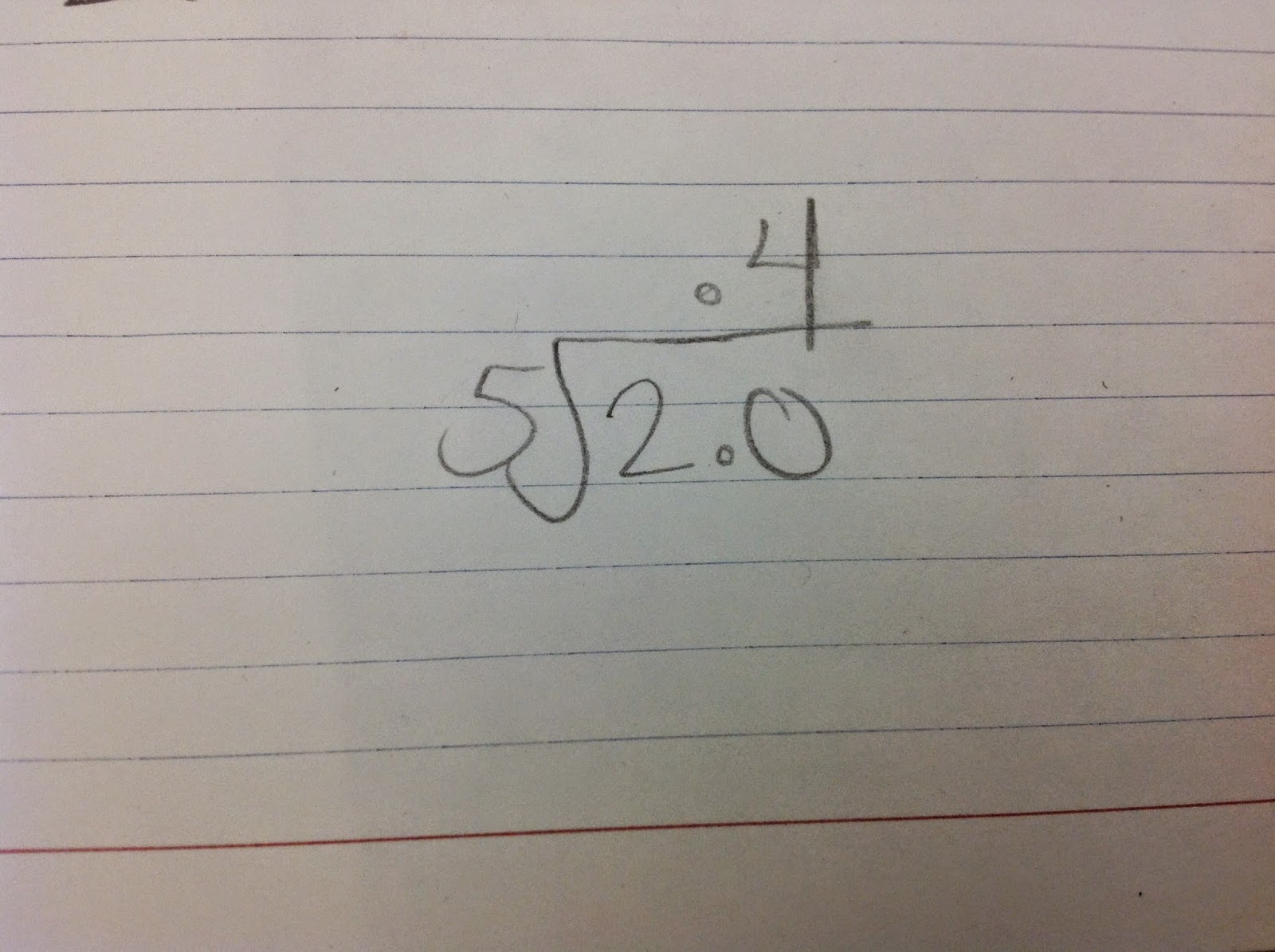The Learning Objective: Multiply decimals to find a product. Divide decimals with whole number divisors to find a quotient.
Quote of the Day: “In a game against the San Francisco 49ers, Jim Marshall spotted the football on the ground. He scooped it up and ran for a touchdown as the crowed cheered. But he ran the wrong way. He scored for the wrong team on national television. It was the most devastating moment of his life. The shame was overpowering. But during halftime he thought, ‘If you make a mistake, you got to make it right. I realized I had a choice. I could sit in my misery or I could do something about it.’ Pulling himself together for the second half, he played some of his best football ever and contributed to his team’s victory.” - Carol Dweck
Agenda: The first part of class was a continuation of multiplying decimals. The second part of class was an introduction to dividing decimals. Today we only talked about divisors with whole numbers.
- Jumpstart with adding and subtracting decimals to combat the fact that students might forget to lineup decimals after we multiplied.
- Review the homework from multiplying decimals the previous night. I loved the question that asked students if the product of 0.4 x 1.8 would be greater than 0.4 and to explain why.
- The students worked in partners on the algorithm of multiplication. I went around the room to assist them and asked the question how many times does the decimal move in each problem until I felt confident students understood the process.
- I gave students a My Favorite No problem of $2.50 divided by 2. When too many students were successful, I changed the problem to say 2 divided by 5. This proved to be a question that less than half the students could successfully answer. Most of them did 5 divided by 2.
- We took notes on dividing decimals with whole number divisors after the students had a chance to try it on their own.
- I had the students do one problem independently from the notes to verify they were annexing zeros and bringing the decimal up correctly.
- The students started their homework with about 10 minutes left which was a division of decimals worksheet.
The Assessment: In the first class my assessment was to go from student to student as they worked in partners on the review to see if they could tell me how many times to move the decimal. I also checked homework and the weekly quiz as always.
In the second class, I checked one problem that they did independently on the notes and also went around to verify students were comfortable with the first couple of problems on the homework. We also did the problem as part of My Favorite No before starting the decimals lesson. The problem was 2 divided by 5.
Homework: A division of decimals worksheet. I'm finding my homework assignments to be more effective this year than ever before with having an extra block to teach. In every class, students are starting the homework, getting feedback, and gaining confidence in knowing that they can do it. From there it's a matter of practicing and fluency. I'd like to give students less problems and more challenge in some cases however as I believe some of them may grow board from the lack of challenge and mindless repetition.
My Glass Half-Full Take: One of my students said, "After these messages I'll be right back." We ended our first class in that block at 11:12 and they came back after lunch at 12:30. I was glad to hear that someone born after the year 2000 knew the jingle to the cartoons I used to watch in the 1990s.
On the math side of things, I always enjoy seeing students think about a question such as 2 divided by 5. Some of the answers I received were that it can't be done (and I acknowledged this point by stating it would not make sense to divide 2 cars into 5 pieces).
One Thing to Do Differently: The multiplication review worksheet I'd like to use next time is right here. Some of the material is taken from Yummy Math and some of it is tweaked by me. Students still do fifteen multiplication problems with decimals and it asks students to add a bunch of numbers when they are done. It is also more motivating to see that at the end of the problem the number has some meaning rather than having a worksheet just pull numbers out of the sky.
I'd also like to show students this picture to demonstrate that it is ok to lineup the decimals in multiplication. I don't find it to be the easiest or cleanest way of doing things, but it leads to the correct solution.
Link of the Day: I really enjoy this article on the textbook and agree that I could certainly live without it. Currently we have a textbook and I've used it twice this week, but as the link above indicates math can come to life best through our own visions.



No comments:
Post a Comment